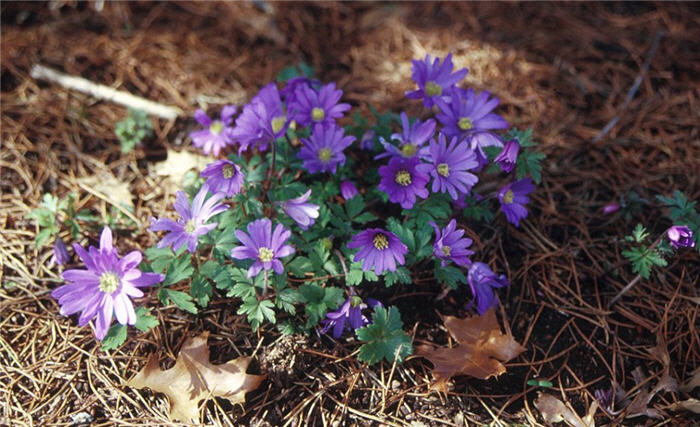| Botanical Name: Anemone blanda | |
| Common Name: Windflower |

-
Anatomy
-
Culture
-
Design
Plant Type
Ground cover, Perennial, Bulb
Height Range
Under 1'
Flower Color
Blue, Lavender, Pink, White
Flower Season
Spring
Leaf Color
Green
Bark Color
n/a
Fruit Color
n/a
Fruit Season
n/a
Sun
Full, Half
Water
Medium
Growth Rate
Slow
Soil Type
Sandy, Clay, Loam
Soil Condition
Average, Rich, Well-drained
Soil pH
Neutral
Adverse Factors
n/a
Design Styles
English Cottage, Meadow, Mediterranean, Woodland
Accenting Features
Showy Flowers
Seasonal Interest
Spring
Location Uses
Perennial Border, With Rocks
Special Uses
Naturalizing, Small Spaces
Attracts Wildlife
n/a
Information by: Stephanie Duer
Photographer: Linda Engstrom
Photographer: Linda Engstrom
-
Description
-
Notes
This plant makes an attractive ground cover that has fern-like foliage accented by daisy-like flowers that bloom in April and May. Plant stands 4 to 6 inches tall and wide, though in time it may cover more area. Colors range from white, pink, lavenders, and blues.
Grow in clay-loam or sandy-loam, well-drained soil in full sun to part shade. Soak tubers in water overnight before planting. Plant 2.5-3†deep and 4-5†apart in fall. Although called windflowers, these plants will do best if sheltered from the wind. Keep watered throughout the growing season, but decrease watering once the plant goes dormant. Plants will naturalize by both tuberous rhizomes and by self-seeding (new seedlings bloom the second year). Plants go dormant after flowering.